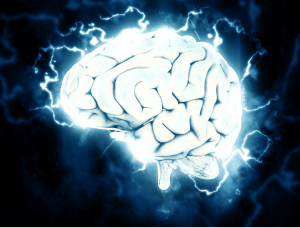Want to know the benefits and process of a yoga nidra practice?
In this article I will outline:
- What yoga nidra
- What happens in a session
- Benefits of yoga nidra
- How to practice
- Links to sessions
What is Yoga Nidra?
Yoga Nidra is translated into ‘yogic sleep’ and is a form of meditation practiced lying down. Although the title of the practice might suggest taking an afternoon nap, and while falling asleep can be a common occurrence during the practice, sleeping is not the goal.
Yoga Nidra is an exploration into the deeper layers of our psyche and consciousness, whereby we experience a state of consciousness between waking and sleeping which can have a whole host of benefits to the body and mind.
You cannot practice incorrectly, and whatever happens during your session is an exploration, there is no right or wrong. It’s more about feeling and being as opposed to thinking and doing.
All you need to do is lie back, get yourself comfortable, and surrender to the spoken word that guides you.
One of the reasons why I love Yoga Nidra so much is because it’s accessible and available to everyone! If you’re suffering from an injury or medical condition which limits your physical yoga practice then this is a great alternative to use whilst in recovery.
Of course, it is not limited to those who can’t practice yoga asana so even if you have a strong physical practice Yoga Nidra can be a great addition to your existing practice.
So what actually happens in a Yoga Nidra session?
The spoken word guides us through various phases, and each phase has a different intention.
Body scan, breath awareness, and visualisation are some of the key tools used during the practice, and as we are guided through our relaxation response is activated and our parasympathetic nervous system gets switched on. This is our rest and digest mode, which is where we want to be to feel fully and deeply rested.
As the practice progresses we move through the different brain wave states, which each have its own qualities and benefits. It’s much like transitioning through a sleep cycle yet we are, or at least trying to stay awake and conscious throughout the practice.

As the practice begins we enter Alpha waves, this is where our thoughts are quiet, we are in a restful waking state, and this is the wave that is present when we meditate.
Alpha wave is good for integrating the mind and body, coordination, and learning.
As the practice progresses we move into Theta waves, which are indicative of REM sleep. This type of wave occurs at the end of a 90 min sleep cycle when we approach walking up or vivid dreaming.
When we are in Theta our creativity is enhanced, as is our emotional memory, and our perceptual and sensory processing.
Once we hit this phase the production of the chemical cortisol, which is also known as the stress hormone stops, carbs and cholesterol are metabolised and the pituitary growth hormone increases.
Then we enter the Delta wave, which is the slowest of the brain waves, it’s here that the body can access deep healing and regeneration. When we spend time in Delta our sleepiness reduces, our concentration improves, and our moods are also elevated.
What’s more, after the practice has finished we are more likely to feel good and much calmer due to the increased levels of dopamine and GABA that also get released during the practice.
The state between waking and sleeping is called the Alpha/Theta Boundary, and this is the state where the Yoga Nidra magic really happens.
It’s here between these two waves that we can really explore our consciousness, and even though we move through these varying brain waves and some of which are directly related to sleep, we are for the most part ‘awake’ or conscious, so yoga Nidra is sometimes described as ‘conscious sleep’.
Spending time in each brain wave state gives us an opportunity to utilise their benefits, something which we may struggle to do on a day-to-day basis mainly because we lead very stressful and fast-paced lives.
If our nighttime sleep isn’t that great then we won’t be accessing all the waves in a sleep cycle and could potentially be missing out on all those wonderful benefits.
The practice of Yoga Nidra really allows us a chance to stop and practice getting some proper restorative rest, something which I think we all need more of! And all of this happens whilst lying down, doing nothing but listening, and being guided by the recording – pretty impressive hey?!
 Summing up some of the benefits of Nidra:
Summing up some of the benefits of Nidra:
- Anyone can practice
- You cannot practice incorrectly
- Improved sleep
- Improved creativity
- Improved mental focus
- Aids in emotional regulation
- Activates the parasympathetic nervous system (rest and digest)
- Releases feel-good hormones
So how do we practice?
Firstly if you’re at home, make sure you won’t be disturbed for the duration of the practice, turn off your phone, and let your family or housemates know that you don’t want to be disturbed.
Make sure you’re in comfortable clothing and remove any watches, jewellery, or belts that may make you uncomfortable during the practice.
Lying down allows us to access this in-between state much easier than when seated so its best to be practiced this way, but if for any reason lying down is not an option then a supported and comfortable seated position should be taken, using bolsters and blankets against a wall can be a great way to do this.
When we enter a restful state the body can become cold quickly so make sure you are in a warm environment and cover yourself with a blanket. If you like you can place an eye pillow or something over your eyes to block the light out to help you relax deeper.
Then just allow yourself to fully relax and listen to the recording, as I said in the beginning, you cannot practice incorrectly, practice is practice, it’s as simple as that!
Gain the benefits of yoga nidra with these practices
I hope you enjoy them.
Click to practice





